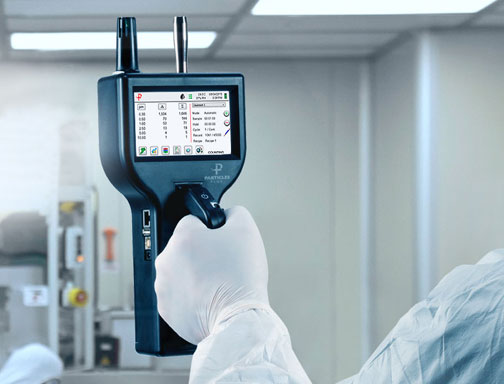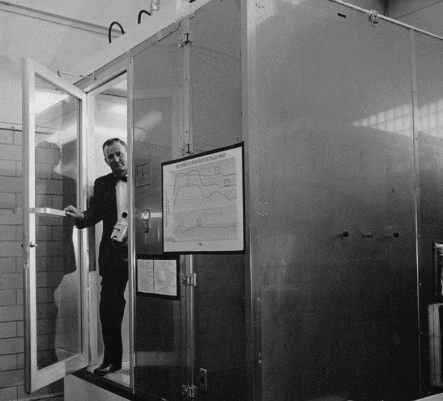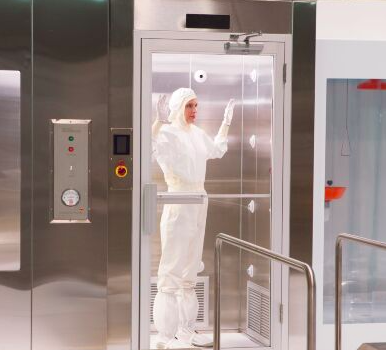Particle counting in medical facilities is a critical aspect of maintaining a clean and safe environment for patients, staff, and any medical processes taking place. It is essential to understand how particle counting works and why it’s so important in settings such as operating rooms, laboratories, and clean rooms where sterility and control over environmental conditions are paramount.
This article will guide you through the essentials of particle counting in medical clean rooms, why it’s vital for air quality control, and how it can impact the safety and effectiveness of medical services.
The Importance of Particle Counting in Medical Environments

In medical facilities, the presence of airborne particles can be a major concern, especially in areas that are designed to be sterile, such as clean rooms. Particles can carry bacteria, viruses, and other contaminants that may compromise the sterility of the environment and pose health risks to patients or contaminate sensitive medical products.
Particle counting is used to measure and monitor the number and size of particles in the air within a controlled environment. This data is critical for ensuring that the air quality meets strict standards and for maintaining the integrity of the medical processes and products.
Clean Rooms and Standards
Clean rooms in medical facilities are designed to maintain extremely low levels of particulates. They are classified according to the number and size of particles that are permitted per cubic meter of air. The most common standards for clean room classification are provided by the International Organization for Standardization (ISO), specifically ISO 14644-1.
For example, an ISO 5 clean room is allowed to have 3,520 particles per cubic meter that are 0.5 µm in size or larger, whereas an ISO 8 clean room can have 3,520,000 particles of that same size. The classification system is crucial for determining the level of control needed over the production environment, particularly in the pharmaceutical, medical device, and biotechnology industries.
Impact on Patient Safety and Product Quality
High levels of cleanliness and control over particulates are essential in many medical processes, from surgery to the manufacture of sterile medical devices and pharmaceuticals. The presence of unwanted particles can lead to infections in patients or compromise the efficacy of medical products. Particle counting ensures that the clean room environment is within acceptable limits and helps to prevent potential issues related to air quality.
How Particle Counting Works
Particle counting is a technical process that requires specialized equipment and trained personnel. The equipment used is known as a particle counter, and it comes in various forms, including handheld, portable, and remote units.
Types of Particle Counters
There are two primary types of particle counters: optical particle counters and condensation particle counters. Optical particle counters work by drawing air into the unit and using a laser to detect particles as they pass through the light beam, measuring their size based on the light scattering. Condensation particle counters, on the other hand, enlarge particles by making them condense with a vapor, making them easier to detect and count.
The Particle Counting Process
The process of particle counting involves sampling the air in the clean room at specific intervals and locations to ensure a comprehensive understanding of the air quality across the entire controlled environment. Data collected from the particle counters is analyzed to determine whether the environment meets the required clean room standards.
Controlling Air Quality in Medical Clean Rooms
Maintaining air quality in medical clean rooms involves a combination of particle counting and implementing proper clean room practices.
Filtration and Airflow Systems
High-efficiency particulate air (HEPA) filters and ultra-low penetration air (ULPA) filters are used in clean rooms to remove particles from the air. These filters are capable of trapping very small particles, thus ensuring the air remains clean. The clean room design also includes specific airflow patterns, such as laminar or turbulent flow, to help maintain cleanliness and prevent contamination.
Clean Room Protocols
Protocols are in place to minimize the introduction of particles into the clean room. These may include gowning procedures for staff, restrictions on materials allowed into the clean room, and specific cleaning and disinfection processes.
Challenges and Solutions in Particle Counting
Even with advanced technology and protocols, particle counting in medical facilities faces challenges that must be addressed to maintain the integrity of the clean room environment.
Calibration and Maintenance of Particle Counters
To ensure accurate readings, particle counters must be regularly calibrated and maintained. Calibration involves testing the particle counter against a known standard and adjusting it as necessary to ensure precision. Maintenance may include cleaning the sensors and replacing any worn components.
Adapting to Environmental Changes
Changes in the clean room environment, such as increased personnel activity or the introduction of new equipment, can affect particle levels. Facilities must be able to adapt their particle counting strategies to account for these changes and maintain control over air quality.
Regulatory Compliance
Medical facilities must comply with various regulations related to clean rooms and air quality. Regular particle counting helps facilities demonstrate compliance with these regulations and avoid potential penalties or closures.
The Future of Particle Counting in Medical Facilities
Advancements in technology are paving the way for more sophisticated particle counting methods and equipment. This includes the integration of Internet of Things (IoT) devices that allow for real-time monitoring and alerts, and artificial intelligence (AI) to predict and prevent potential contamination events.
Innovations in Particle Counting Technology
Emerging technologies, such as machine learning algorithms, are being developed to improve the accuracy and efficiency of particle counting. These advancements could lead to less invasive methods for monitoring air quality and more proactive approaches to managing clean room environments.
Integration with Building Management Systems
Particle counting systems are increasingly being integrated with building management systems, allowing for centralized control and monitoring of environmental conditions. This integration can lead to more responsive and automated adjustments to maintain air quality standards.
Conclusion
Understanding and managing particle counting in medical facilities is a vital component of maintaining a clean and safe environment. It is integral to ensuring patient safety, product quality, and regulatory compliance in medical clean rooms. With ongoing technological advancements and a commitment to rigorous standards and protocols, medical facilities can continue to provide high-quality care and products in a controlled and sterile environment.
By prioritizing particle counting and air quality control, medical facilities can uphold their responsibility to protect both patients and staff while advancing medical science in the cleanest environment possible.



